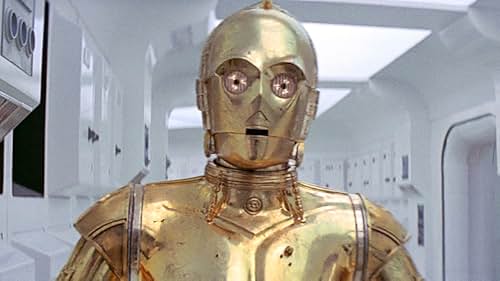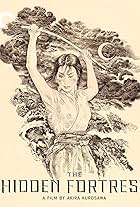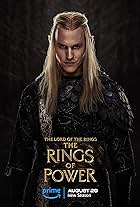
The most rudimentary research into the creative origins of the groundbreaking 1977 sci-fi flick "Star Wars" will reveal to the reader that creator George Lucas was inspired by "Flash Gordon" serials from the 1930s, as well as Akira Kurosawa's 1958 epic "The Hidden Fortress." Kurosawa's film famously opened with two clownish characters (Kamatari Fujiwara and Minoru Chiaki) who aimed to earn their fortune as samurai. After several misadventures, the peasants unwittingly become embroiled in a much larger plot about a missing princess (Misa Uehara), a war, and a brave protective warrior (Toshiro Mifune). "Star Wars" borrowed that film's structure, introducing audiences to its sci-fi action through the eyes (lenses?) of the robotic characters C-3Po (Anthony Daniels) and the non-humanoid R2-D2.
C-3Po was a prissy, fastidious droid who seemed impatient with the foibles of the organic beings he lived with, and was frequently panicked and afraid. The only time...
C-3Po was a prissy, fastidious droid who seemed impatient with the foibles of the organic beings he lived with, and was frequently panicked and afraid. The only time...
- 8/26/2023
- by Witney Seibold
- Slash Film


After his dramatic feature “The Lower Depths”, Japanese auteur Akira Kuroswa returned to the jidai geki genre with his 1958 effort “The Hidden Fortress”. While the movie would continue his exploration of the human condition, in particular, its expression during times of war, this work also marks the first time Kurosawa would use the widescreen-format, a technology which would continue to influence his future works. Besides the often quoted “Rashomon” or “Seven Samurai”, to name just two examples, “The Hidden Fortress” may just be one of the director’s most influential features as it inspired the likes of George Lucas and his Star Wars-movies.
As mentioned before, the story is set during a time of war, after a significant battle has caused the near defeat of House Akizuki and its leaders. After their escape from imprisonment, two farmers and petty thieves names Tahei (Minoru Chiaki) and Matashichi...
As mentioned before, the story is set during a time of war, after a significant battle has caused the near defeat of House Akizuki and its leaders. After their escape from imprisonment, two farmers and petty thieves names Tahei (Minoru Chiaki) and Matashichi...
- 8/11/2020
- by Rouven Linnarz
- AsianMoviePulse


Most epic movies make you ponder the money involved. How many bootstraps and belt buckles were crafted for The Lord of the Rings (2001-3)? How many computers were used to design the final battle in Avengers: Endgame (2019)? How much napalm blew up the jungle in the opening shot of Apocalypse Now (1979)? Seven Samurai (1954) doesn’t inspire such analyses; at least, not while you’re watching it. Watching this immersive medieval parable from Akira Kurosawa is like embracing a long-lost legend, dug up after hundreds of years like an ancient text on celluloid. Kurosawa was so seamless as a filmmaker that the sets and costumes and details all melt into his story.
From the American cowboy remake The Magnificent Seven (1960) to Pixar’s insect adventure A Bug’s Life (1998), the premise of Seven Samurai simmers in the cinematic consciousness. Set in 16th century Japan, ravaged by civil wars, a group of armoured...
From the American cowboy remake The Magnificent Seven (1960) to Pixar’s insect adventure A Bug’s Life (1998), the premise of Seven Samurai simmers in the cinematic consciousness. Set in 16th century Japan, ravaged by civil wars, a group of armoured...
- 5/15/2020
- by Euan Franklin
- HeyUGuys.co.uk
The Hidden Fortress
Written by Ryûzô Kikushima, Hideo Oguni, Shinobu Hashimoto, and Akira Kurosawa
Directed by Akira Kurosawa
Japan, 1958
By the time Akira Kurosawa’s The Hidden Fortress was released in 1958, it was more or less settled that the Japanese filmmaker — the only Japanese filmmaker most average moviegoers had heard of at that point — was among the world’s best. This was after Rashomon, after Ikiru, and after The Seven Samurai. Kurosawa’s talent was beyond question, and his global cinematic prominence was growing. However, his last three films, while positively received by critics, did not do so well with audiences. He needed something that would combine quality with commercial success. “A truly good movie is really enjoyable, too,” he once said. “There’s nothing complicated about it.” He would meet this condition with The Hidden Fortress, out now on a new Criterion Collection Blu-ray/DVD combo. While not containing the narrative innovation,...
Written by Ryûzô Kikushima, Hideo Oguni, Shinobu Hashimoto, and Akira Kurosawa
Directed by Akira Kurosawa
Japan, 1958
By the time Akira Kurosawa’s The Hidden Fortress was released in 1958, it was more or less settled that the Japanese filmmaker — the only Japanese filmmaker most average moviegoers had heard of at that point — was among the world’s best. This was after Rashomon, after Ikiru, and after The Seven Samurai. Kurosawa’s talent was beyond question, and his global cinematic prominence was growing. However, his last three films, while positively received by critics, did not do so well with audiences. He needed something that would combine quality with commercial success. “A truly good movie is really enjoyable, too,” he once said. “There’s nothing complicated about it.” He would meet this condition with The Hidden Fortress, out now on a new Criterion Collection Blu-ray/DVD combo. While not containing the narrative innovation,...
- 3/28/2014
- by Jeremy Carr
- SoundOnSight
Criterion re-releases Akira Kurosawa’s 1958 adventure The Hidden Fortress for a ravishing blu-ray update this month, following hot on the heels of a similar refurbishing for Throne of Blood (1957). Long hailed as a “primary” influence on George Lucas’ Star Wars, there are indeed notable structural similarities, but they’re quite superficial, as those attracted to the title based on this tidbit alone should take note. An entertaining adventure comedy that utilized widescreen technology to breathtaking effect (and represents Kurosawa’s first time using Toho Scope), it’s an impressively structured endeavor on its own, and was actually the first substantial hit for Kurosawa since 1954’s Seven Samurai.
At its core a re-dressed version of The Prince and the Pauper, two peasants in war torn feudal Japan, Tahei (Minoru Chiaki) and Matakishi (Kamatari Fujiwara) escape as prisoners of war and attempt to make their way back home to their own province.
At its core a re-dressed version of The Prince and the Pauper, two peasants in war torn feudal Japan, Tahei (Minoru Chiaki) and Matakishi (Kamatari Fujiwara) escape as prisoners of war and attempt to make their way back home to their own province.
- 3/18/2014
- by Nicholas Bell
- IONCINEMA.com
Picking your favorite Akira Kurosawa film is a tricky choice for any movie fan. From "Rashomon" to "Ran," the great Japanese filmmaker, one of the most beloved and influential directors of all time, knocked out a string of classics in a career that lasted well over 40 years. But more often than not, at the top of the list for Kurosawa fans is "The Seven Samurai," the 1954 samurai epic that redefined the action movie for generations.
Following six samurai (and one pretender, iconically played by Toshiro Mifune) who are recruited by a village of farmers to protect them from bandits, it remains to this day one of the most stirring, thrilling adventures in cinema history, and landed Kurosawa firmly on the map in international cinema. The film was released in Japan 58 years ago today, on April 26th, 1954 (a U.S. release, heavily cut down, would follow 30 months later), and to mark the occasion,...
Following six samurai (and one pretender, iconically played by Toshiro Mifune) who are recruited by a village of farmers to protect them from bandits, it remains to this day one of the most stirring, thrilling adventures in cinema history, and landed Kurosawa firmly on the map in international cinema. The film was released in Japan 58 years ago today, on April 26th, 1954 (a U.S. release, heavily cut down, would follow 30 months later), and to mark the occasion,...
- 4/26/2012
- by Oliver Lyttelton
- The Playlist
Chicago – Hideo Gosha’s spectacularly entertaining 1964 feature directorial debut, “Three Outlaw Samurai,” is a samurai film for moviegoers who aren’t necessarily fans of the samurai genre. At a running time of 93 minutes, the picture is briskly paced and packed with suspenseful set-pieces, while centering its narrative on a partnership between three men who could easily be dubbed, “Good,” “Bad” and “Ugly.”
Though the film essentially functions as a prequel to Gosha’s Japanese television show of the same name, moviegoers won’t need any familiarity with the material to get immediately caught up in the action. Tadashi Sakai’s in-your-face cinematography often slants to a diagonal angle while closing in on the agonized faces of foes as they fight to the death. When the sword meets flesh, Gosha doesn’t spare the audience of the blood that follows.
Blu-ray Rating: 4.0/5.0
Tetsurô Tamba, a veteran actor memorably featured in Masaki Kobayashi’s classic,...
Though the film essentially functions as a prequel to Gosha’s Japanese television show of the same name, moviegoers won’t need any familiarity with the material to get immediately caught up in the action. Tadashi Sakai’s in-your-face cinematography often slants to a diagonal angle while closing in on the agonized faces of foes as they fight to the death. When the sword meets flesh, Gosha doesn’t spare the audience of the blood that follows.
Blu-ray Rating: 4.0/5.0
Tetsurô Tamba, a veteran actor memorably featured in Masaki Kobayashi’s classic,...
- 2/28/2012
- by [email protected] (Adam Fendelman)
- HollywoodChicago.com
Shichinin No Samurai / Seven Samurai (1954) Direction: Akira Kurosawa Cast: Toshiro Mifune, Takashi Shimura, Yoshio Inaba, Seiji Miyaguchi, Isao Kimura, Kamatari Fujiwara, Yoshio Tsuchiya Screenplay: Akira Kurosawa, Shinobu Hashimoto, Hideo Oguni Oscar Movies Toshiro Mifune, Seven Samurai By Dan Schneider of Cosmoetica Some films get better after repeated viewings. Akira Kurosawa's 1954 black-and-white drama Shichinin no samurai / Seven Samurai is one of them. It fully deserved winning that year's Silver Lion at the Venice Film Festival, as well its Academy award nominations for Best Art Direction-Set Decoration (black and white) and Best Costume Design (black and white). Additionally, Seven Samurai became an international sensation and it's reported to have been the highest-grossing Japanese film of its day. [Note: Spoilers ahead.] On first view, Seven Samurai is simply a great action film; but with subsequent viewings, the finer points of characterization come through, subliminally and purposefully seeping into the viewer's mind. [...]...
- 3/12/2011
- by Dan Schneider
- Alt Film Guide
IMDb.com, Inc. takes no responsibility for the content or accuracy of the above news articles, Tweets, or blog posts. This content is published for the entertainment of our users only. The news articles, Tweets, and blog posts do not represent IMDb's opinions nor can we guarantee that the reporting therein is completely factual. Please visit the source responsible for the item in question to report any concerns you may have regarding content or accuracy.
